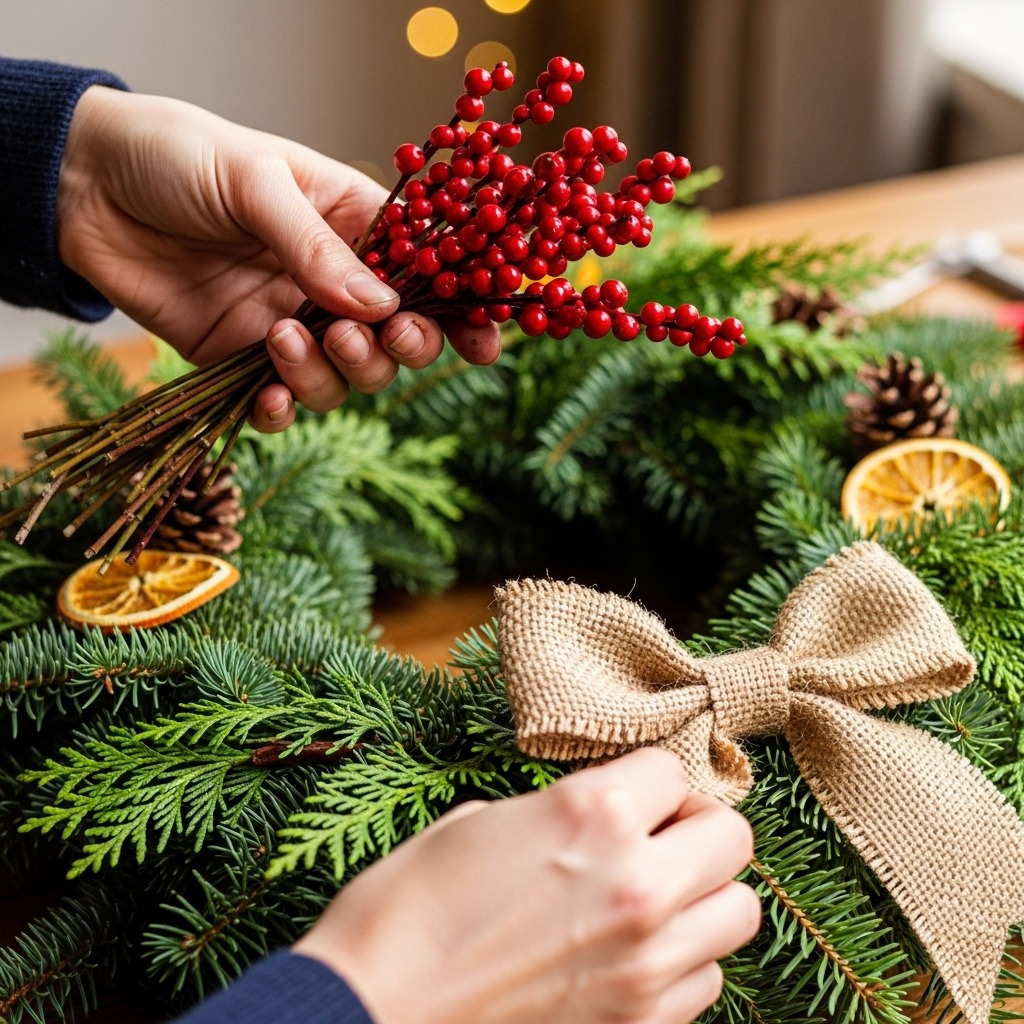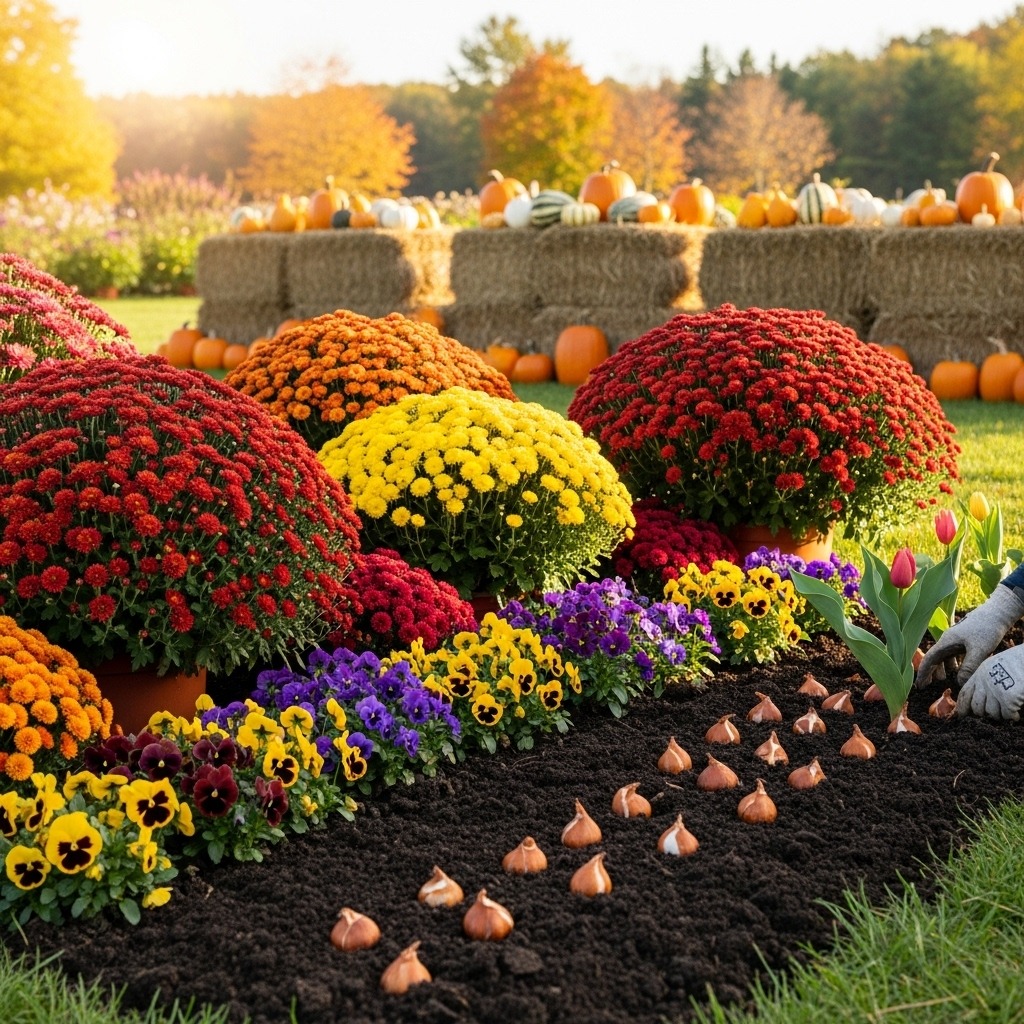Nothing says Christmas quite like the vibrant red and green of poinsettias.
These cheerful plants instantly brighten up any room and bring that unmistakable festive charm to your home.
But while poinsettias are stunning, many people find them wilting or losing leaves long before the New Year.
The good news? With the right care and a few smart tricks, you can keep your poinsettias thriving and beautiful all through the holidays — and even beyond.
1. Start by Choosing a Healthy Plant
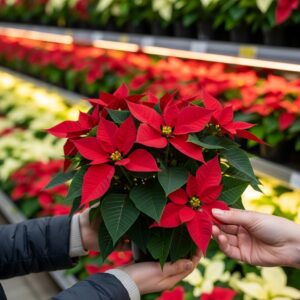
Your poinsettia’s longevity begins the moment you pick it out.
Choose a plant with bright, vivid bracts (the colorful leaves) and dense, dark green foliage beneath.
Avoid plants with drooping or yellowing leaves, as these are signs of stress or poor health.
The small, yellow buds at the center — the true flowers — should be tight and not fully opened.
This indicates the plant is still in its prime and will last longer once you bring it home.
When buying, also check that the plant isn’t sitting near automatic store doors or cold drafts.
Poinsettias are sensitive to temperature changes, and exposure to cold air can shock them even before you get them home.
2. Protect from the Cold During Transport

Poinsettias may be tropical beauties, but they hate the cold.
When transporting your plant home, wrap it loosely in a paper sleeve or plastic covering to protect it from chilly outdoor air.
Even a brief exposure to temperatures below 50°F (10°C) can cause damage.
Once home, unwrap it immediately and allow it to breathe — keeping it safe from drafts or heating vents.
If you live in a cold climate, it’s wise to warm your car before bringing your poinsettia out of the store.
That simple step can make a big difference in how well it adjusts to your home environment.
3. Give It the Right Light

Poinsettias thrive in bright, indirect sunlight.
Place them near a sunny window where they can receive at least six hours of natural light daily.
East- or west-facing windows are ideal since they offer bright light without harsh midday sun.
Direct sunlight can scorch the leaves, while too little light will cause the plant to lose its vibrant color and drop leaves prematurely.
If your space doesn’t get much natural light, consider using a grow light for a few hours a day.
This helps mimic daylight conditions and keeps the plant looking fresh through the holidays.
4. Keep It Cozy — But Not Hot

Temperature control is key to poinsettia health.
Aim to keep your plant in a room with temperatures between 65–75°F (18–24°C) during the day and around 60°F (15°C) at night.
Avoid placing it near fireplaces, heaters, or vents, as the dry, hot air can stress the plant.
Likewise, keep it away from drafty windows and doors, which can cause chilling injury.
A good rule of thumb is to place your poinsettia in a room where you’d feel comfortable sitting in a light sweater — not too cold, not too warm.
5. Water Wisely
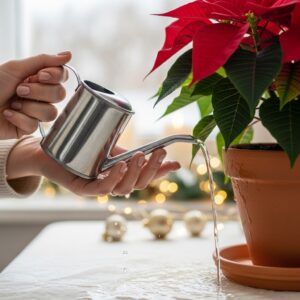
Overwatering is the most common reason poinsettias don’t last through the holidays.
Check the soil daily by touching the surface; water only when the top inch feels dry.
When watering, make sure to do so thoroughly until water drains out of the bottom, then empty any excess from the saucer to prevent root rot.
Avoid letting the plant sit in standing water, and don’t mist the leaves — poinsettias prefer moderate humidity but not damp foliage.
If your indoor air is particularly dry, you can place the pot on a tray with pebbles and water to gently raise humidity without soaking the roots.
6. Feed for Extended Freshness
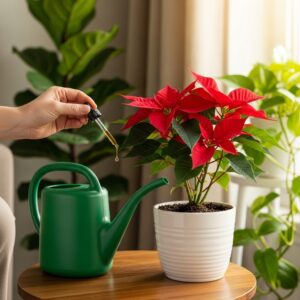
During the holiday season, your poinsettia won’t need heavy fertilization, but a light feeding every two to three weeks with a balanced, all-purpose houseplant fertilizer can help maintain vigor.
Use half the recommended strength to avoid over-fertilizing, which can harm the plant.
If you plan to keep your poinsettia past the holidays, continue feeding it regularly from spring through summer to support new growth.
7. Avoid Stress from Moving

Once your poinsettia is happy in its spot, try not to move it around too often.
These plants are sensitive to changes in light, temperature, and airflow.
Shifting locations can trigger leaf drop.
If you need to move it for cleaning or rearranging decorations, return it to its original spot as soon as possible.
8. Trim and Refresh After the Holidays
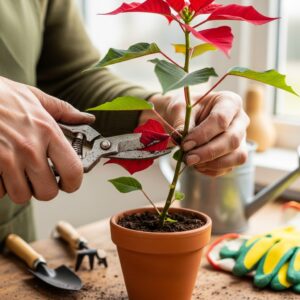
Once the holiday season ends and the colorful bracts start to fade, you can prepare your poinsettia for another blooming cycle.
Cut the plant back to about 6 inches tall and continue to water lightly.
Move it to a bright, cool spot until spring, when new growth appears.
In summer, you can even move your poinsettia outdoors (in partial shade) to encourage stronger growth. Just be sure to bring it back inside before the first frost hits.
9. Encourage Re-Blooming for Next Christmas
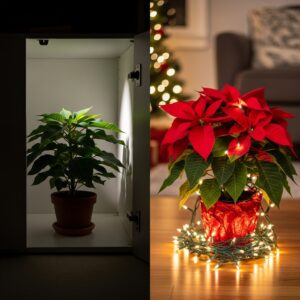
If you want to enjoy your poinsettia again next Christmas, start its re-blooming routine in early fall.
Around late September, provide 14 hours of complete darkness each night (such as by placing it in a dark closet) and 10 hours of light during the day.
Continue this cycle for about 8–10 weeks.
By early December, your poinsettia should develop its signature colorful bracts again — ready to shine for another festive season.
Poinsettias may have a reputation for being fussy, but with a little care and consistency, they can stay stunning from Thanksgiving through New Year’s and even beyond.
By choosing a healthy plant, keeping it warm and bright, and watering with care, you’ll enjoy vibrant holiday color for weeks on end.
Treat your poinsettia well, and it’ll reward you with beauty that lasts all season long — and maybe even for many Christmases to come.
🌿 Frequently Asked Questions About Poinsettia Care
1. How often should I water my poinsettia?
Poinsettias prefer slightly moist soil but don’t like sitting in water. Water only when the top inch of soil feels dry to the touch.
Pour enough water so it drains from the bottom of the pot, then empty any excess from the saucer to prevent root rot.
Overwatering is one of the most common causes of leaf drop, so always check before you water.
2. Can poinsettias survive after Christmas?
Yes! With proper care, poinsettias can last long after the holidays and even rebloom the following year.
After the festive season, prune the plant back to about six inches, reduce watering slightly, and keep it in bright, indirect light.
In spring, resume regular watering and feeding to encourage new growth.
3. Do poinsettias need direct sunlight?
Not quite — poinsettias prefer bright, indirect sunlight.
Place them near a sunny window where they can receive at least six hours of light each day.
Too much direct sunlight can scorch the leaves, while low light can cause the plant to lose its color and drop leaves prematurely.
4. Why are my poinsettia’s leaves turning yellow or falling off?
Yellowing or dropping leaves usually indicate stress from overwatering, cold drafts, or sudden temperature changes.
Check the soil moisture and move your plant away from heaters, vents, or chilly windows.
With stable conditions and proper watering, your poinsettia should recover.
5. How do I keep my poinsettia colorful longer?
To maintain bright, festive colors, provide steady indoor temperatures (65–75°F), consistent watering, and bright, indirect light.
Avoid drafts and don’t move the plant too often.
Light feeding with a diluted fertilizer every few weeks also helps maintain leaf vibrancy.
6. Can I plant my poinsettia outside after the holidays?
If you live in a warm climate (USDA zones 9–11), you can plant poinsettias outdoors once the weather stays above 60°F.
Choose a partially shaded spot with well-draining soil.
In cooler climates, keep it as a houseplant and bring it outdoors only during late spring or summer months.
7. How do I get my poinsettia to bloom again next Christmas?
Starting in late September or early October, give your poinsettia 14 hours of complete darkness each night and 10 hours of daylight.
Continue this for about 8–10 weeks. This “short-day” treatment triggers the colorful bracts to develop, just in time for the next holiday season.
8. Are poinsettias poisonous to pets?
Poinsettias are mildly toxic but not deadly to pets.
Their sap can irritate a pet’s mouth or stomach, causing mild drooling or vomiting.
It’s best to keep the plant out of reach of cats and dogs. If a pet eats a large amount, contact your vet for advice.
9. Should I mist my poinsettia?
No, misting isn’t necessary and can lead to fungal problems.
Poinsettias prefer moderate humidity, so instead of misting, place the pot on a tray filled with pebbles and water to raise humidity naturally.
10. How long do poinsettias last indoors?
With the right care — consistent light, warmth, and proper watering — poinsettias can stay vibrant for six to eight weeks or even longer.
Some can last until spring and re-grow with proper pruning and fertilizing.
